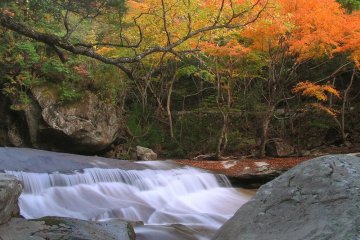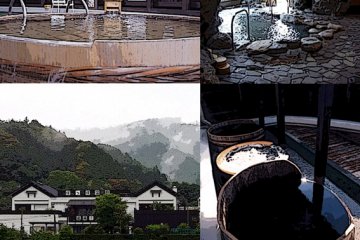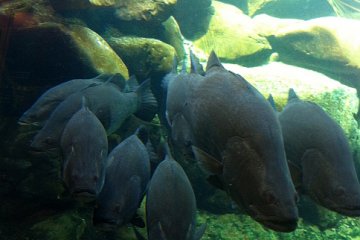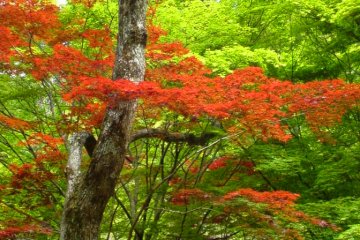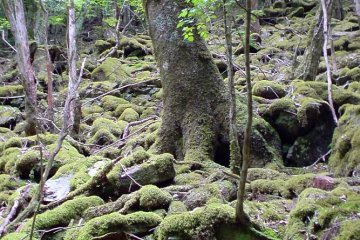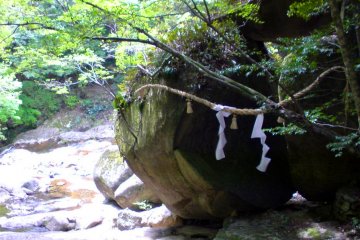The road leading up to Nametoko passes through some unremarkable Japanese scenery. But as the road narrows and driving becomes difficult, you begin to glimpse green valley walls plunging towards an increasingly rock-filled river. After about a kilometer of twisting, narrow road, you come to a car park which gives access to paths on either side of the gorge.
As soon as you set off on any path, you find yourself surrounded by trees of every kind, mottled with mosses that only grow in pristine environments. Below you, the river churns and gushes through contorted channels carved through solid rock and fallen boulders. Besides the wild monkeys, you are likely to encounter deer, snakes, buzzards, and large creatures glimpsed through trees that could be ... well, anything really. The sounds in the gorge can be equally puzzling. Once I followed a path that was ominously signposted as “bad”, and I found myself alone in front of an impressive waterfall coming down in streams across a broad cliff. I heard what sounded like a distant pack of hounds chasing their prey. After refocusing my ears, I realized that the sound was nearby – it was a mass of tiny frogs, sitting deep in the wet crevices of the rock, croaking with the benefit of natural amplification.
Nametoko has gained a place as one of Ehime’s “power spots”, locations that are notable for their capacity for instilling feelings of awe in visitors. Inconceivably huge boulders sit in the river bed, topped with trees whose roots reach down to the soil many meters away. Humans have added their own decorations in the form of Shinto ropes and prayer paper. Cairns of stones stand here and there. The odd thing is, although there are many piles of stones, I’ve never seen anyone making one. Whatever you may think of “natural power”, there’s something exhilarating about walking through these fantastic scenes of natural riot.
You can choose any length of walk to suit your mood. Even a ten minute stroll is rewarding, but you can spend all day hiking the trails to the top of the gorge and the mountain beyond. Near the car park, there’s a cafeteria selling simple lunch food, a camping site, and the stylish Morinokuni Hotel.
In the summer, rainbow trout are released in the lower pools. For a small fee, you can rent a bamboo fishing pole with a lump of bait food and spend several hours fishing. Even beginners will catch one or two of the fish, which are delicious grilled or barbecued later. But watch where you put the bait, or the monkeys will have it as quick as a flash.



